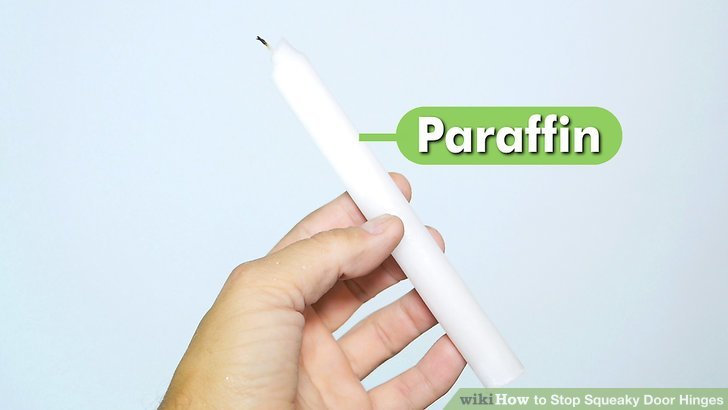
Think of your door hinges as the joints in your body. Just like your knees and elbows need the right lubrication to move smoothly, your hinges do, too. With the right care, you can ensure they operate quietly and effectively. In this guide, I’ll break down simple methods to prevent squeaks on new interior door hinges, ensuring your doors swing freely and silently.
Understand Why Hinges Squeak
Before you dive into fixing squeaky hinges, it’s good to know why they make that pesky noise in the first place. Hinges are made up of multiple metal parts that need to slide past each other. Over time, dirt, dust, or even moisture can accumulate in these spaces. When that happens, the smooth sliding turns into a grind, and you get squeaks.
Another reason for squeaking can be the type of material used in the hinge. Some lower-quality hinges might not be finished well, leading to friction. The problem isn’t just annoying; it’s a sign that your hinges might wear out faster than they should. By understanding the root causes, you can take proactive steps to keep that squeaking at bay.
Inspect Your Hinges Regularly
One of the simplest ways to prevent squeaks is to keep an eye on your hinges. Think of it like a routine health check-up. Look for visible signs of wear or damage, such as rust or chipping paint. If you notice anything unusual, it’s better to address it early.
You should also check for tightness. If the screws are loose, the hinge can move incorrectly, causing friction and, of course, squeaks. You can easily fix this: grab a screwdriver and tighten any loose screws. Just don’t overdo it—too much tightening can strip the screws, making the problem worse.
Choose the Right Lubricant
Lubrication is your best friend when it comes to silent hinges. You might be wondering what type of lubricant to use. The good news is there are several effective options available, and each has its advantages.
– Oil-based lubricants, like 3-in-1 oil, are great for reducing friction. Just a few drops can work wonders.
– Silicone spray is also a popular choice. It’s easy to apply and won’t attract dirt.
– Graphite powder is another option, especially for doors that face moisture, as it won’t gum up like oil.
Here’s the thing: avoid using WD-40 as a long-term lubricant. While it might work in a pinch, it can wash away quickly, leaving you back at square one with that squeaky door.
How to Apply Lubricant Successfully
Applying lubricant sounds simple, but there’s a technique to it. Here’s a quick step-by-step guide to ensure you do it right:
- Open the door fully to give you access to the hinges.
- Identify the hinge points—these are the parts that move and rub against each other.
- Apply your chosen lubricant directly onto the hinge points. If you’re using oil or spray, a little goes a long way.
- Open and close the door several times to work the lubricant into the hinge. This helps it spread evenly.
Remember, less is more when it comes to lubrication. You don’t want excess lubricant dripping down the door or onto the floor.
Consider Hinge Alignment
Sometimes, squeaks aren’t just about lubrication; they can also result from misalignment. If your door doesn’t close correctly or the hinges are visibly off, it may cause the door to rub against the frame, leading to friction and noise.
To check alignment, close the door and observe the gaps along the edges. Do they look even? If one side is tighter than the other, that’s a sign! You might need to adjust the hinges or reposition the door. If you’re not sure how to align them, it’s helpful to consult a tutorial or reach out to someone experienced.
Regular Maintenance is Key
Like any good habit, prevention is easier than fixing a problem down the road. Make hinge maintenance a part of your regular home upkeep. Here are a few simple tasks you can do:
– Wipe down your hinges every few months to remove dust and grime.
– Reapply lubricant occasionally, especially after cleaning.
– Inspect for any loose screws or misalignment during your regular checks.
By staying proactive, you can keep those hinges operating smoothly without the constant worry of squeaks rearing their ugly heads.
When to Replace Hinges
Sometimes, despite your best efforts, hinges may still squeak or show signs of wear. If you’ve tried everything and the hinges are still noisy, it might be time to consider replacements.
Look for hinges made from durable materials and finishes. Stainless steel or brass are excellent choices, as they resist rust and wear. Also, ensure that they’re the right size for your door. A well-fitting hinge can make all the difference in functionality.
If replacing does become necessary, don’t forget to follow up with regular maintenance. That way, you won’t end up dealing with another squeaky door anytime soon.
—
Preventing squeaks on your new interior door hinges doesn’t have to be a daunting task. With the right knowledge and a bit of regular maintenance, those pesky noises can become a thing of the past. Remember to keep your hinges clean, lubricated, and well-aligned, so they can perform their job silently and efficiently. Enjoy the peace and quiet of a smoothly operating door!
